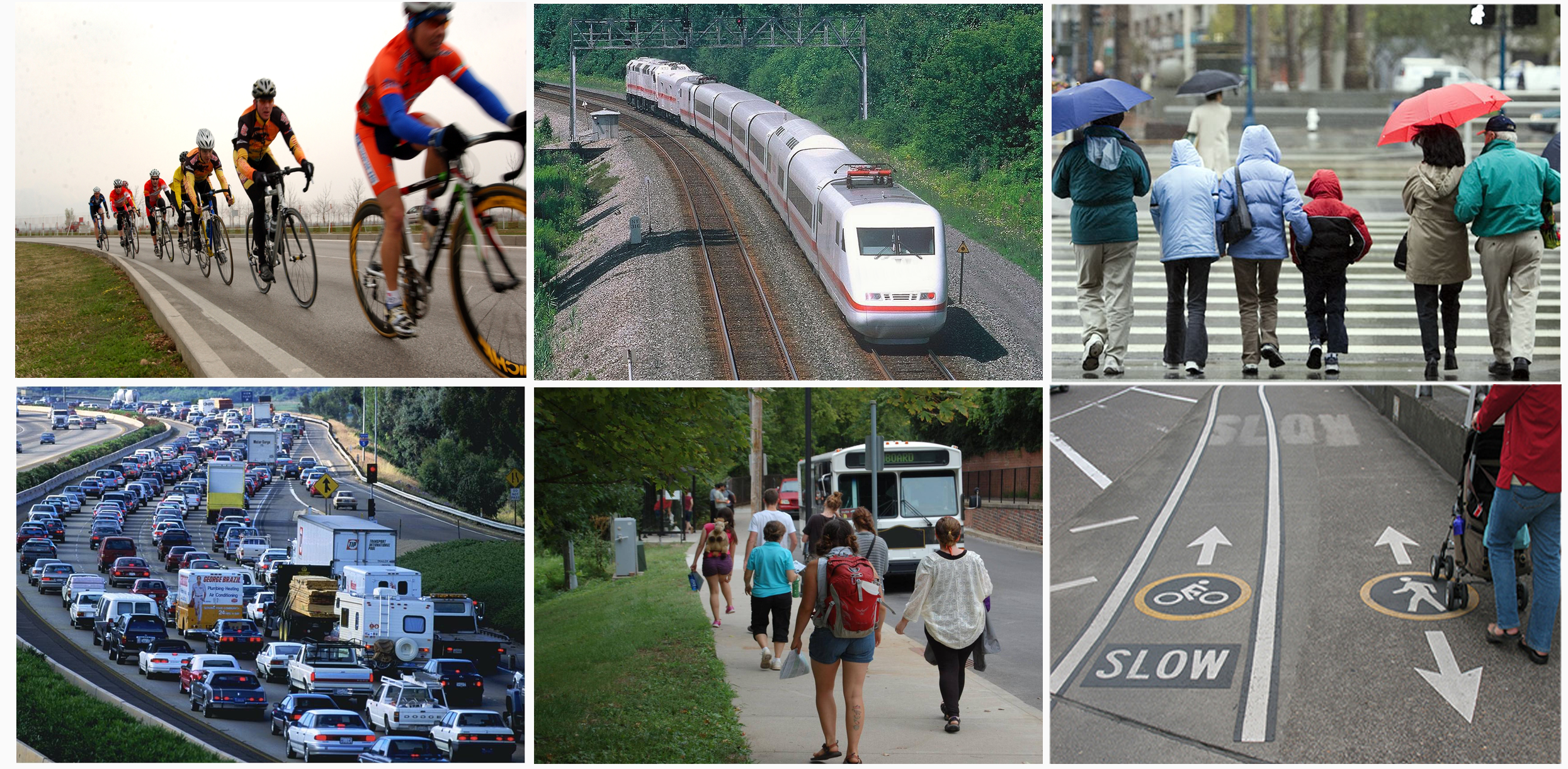What is the Statewide Transportation Plan?
The Statewide Transportation Plan (SWTP) is the result of the statewide planning process that reviews long
range transportation needs in the state, seeks public input on priorities of stakeholders and communities,
evaluates funding resources and develops recommendations for programs, policies and transportation initiatives. |
Why is it important to update the SWTP?
It is important to maintain oversight of the condition and operation of transportation programs so that the
State is able to respond to evolving transportation demands. As the State grows and businesses establish themselves
in Alabama, the Department's goal is to provide mobility that facilitates access to jobs, education, commerce and
other trip purposes.
The SWTP is also a federal requirement in order to maintain eligibility for federal funds. Transportation projects
will usually require years of preparation to accomplish. The SWTP looks ahead to identify emerging needs and
evaluate how best to meet the transportation needs of citizens. Projects included in the STIP should be in keeping
with the needs identified in the SWTP. |
What modes of transportation are included in the SWTP?
The SWTP is multimodal and includes roads and bridges, transit, bicycle, pedestrian, freight transportation, passenger
rail and aviation activities. Federal regulations emphasize safety and security; the SWTP will look carefully at the
safety and security of different transportation modes. |
How can I participate in the SWTP update?
The study will have ample opportunity for citizens to participate through public meetings, reviewing materials on
the web and providing comments. You can send in comments via mail, e-mail, or in person at meetings. You can stay
involved through materials posted to the web, by attending public meetings and by communicating with the study team. |
How does the State include Indian Trides in the statewide planning process?
The FAST Act and FHWA continue to strengthen the role of Indian Tribes in the transportation planning process.
Transportation plans shall be developed in consultation with the tribal government and the Secretary of the Interior.
FHWA recently convened a rulemaking committee for the Tribal Transportation Self-Governance Program (TTSGP) in order
to develop a detailed interpretation of how and when Indian Tribes should be fully involved in federal processes and
programs. In the meantime, ALDOT is continuing its efforts towards more fully incorporating the Indian Tribes into
its planning processes. For the Statewide Transportation Plan, ALDOT is coordinating to receive relevant transportation
and socioeconomic data and information, particularly with regard to travel demand modeling and projected growth.
The State of Alabama recognizes nine Indian Tribes: Poarch Band of Creek Indians, Echota Cherokee Tribe of Alabama,
Cherokee Tribe of Northeast Alabama, Ma-Chis Lower Creek Indian Tribe of Alabama, Southeastern Mvskoke Nation,
Cher-O-Creek Intra Tribal Indians, MOWA Band of Choctaw Indians, Piqua Shawnee Tribe, and United Cherokee Ani-Yun-Wiya
Nation. One is also federally recognized: the Poarch Band of Creek Indians. |
How are the Statewide Transportation Plan and the Statewide Transportation Improvement Program related?
The Statewide Transportation Plan is a long-range planning document looking 20 years or more into the future. The
Statewide Transportation Plan is not required to include specific projects but will provide a plan to improve and
maintain the State’s current assets. The Statewide Transportation Improvement Program (STIP) identifies multimodal
transportation projects across the state for a four year period. The STIP includes all projects inside the
Metropolitan Planning Organization’s TIP, as well as projects in the rural and small urban areas. The STIP is
financially constrained, meaning there are sufficient funds available to complete the four-year program of projects. |
What is a Statewide Travel Demand Model?
A statewide model will be developed to provide projected traffic volumes, as well as to identify anticipated
locations of congestion and need for improvements. The model reflects base year 2010 and future year 2040 growth
and is based on readily available data. The model platform is CUBE Voyager.
The model process is initiated with assessment of current conditions. Traffic Analysis Zone (TAZ) boundaries
are defined through a review of Census data, MPO models, and previous ALDOT evaluations of transportation
conditions. The trip generation module uses base year socioeconomic data (population, households, employment,
household median income, and automobile ownership) to determine the number of trips made between TAZs.
Following development of the trip generation module, a base year roadway network will be developed to include all
Interstates, U.S. Routes, and State Routes. Trips are assigned to the network based on the simplest path between
an origin and a destination. By running the base year model, an estimate of the total number of vehicles using
each roadway in the network will be developed. When compared to the roadway capacity, the model identifies congested
areas and shows the level of congestion projected to occur.
The base year model is calibrated and validated to FHWA specifications provided in the Model Calibration and
Reasonableness Checking Manual. Calibration and validation of the base year model ensures it accurately reflects
current travel patterns and traffic volumes, thereby providing confidence in the model and its ability to reflect
current as well as future conditions. After approval of the base year model, the future year model is developed
to project future conditions and determine the transportation network’s future performance. |
